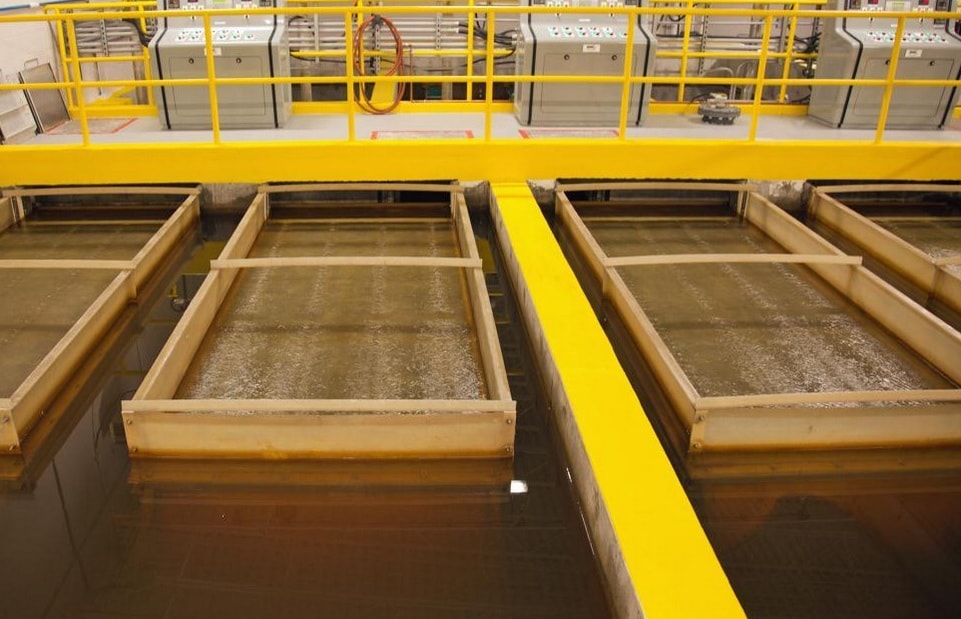The most toxic waste waters are those containing both simple cyanides (with CN—ions) and complex [Cu(CN2)—], [Cu(CN3)-2], [Zn(CN4)-2] etc. Total concentration of simple and complex cyanides varies from 10-15 to 150-300 mg/liter. The most widespread method today is reagent method of oxidation by calcium hypochlorite Ca(OCl)2, hypochlorite lime CaOCl2 or gaseous chlorine.
Most of the cyanide-containing water is purified in cyclic purification units, where the water is treated by the reagents in reservoirs. Larger amounts of waste water are processed in continuous devices.
The reaction occurs in two stages: oxidation of cyanides to cyanates at pH=10÷11.5, followed by cyanate hydrolysis to nitrogen and carbon dioxide at pH=7÷7.5.
Using the vortex layer device allows to oxidize cyanides and decompose them into carbonates and ammonia in one stage in alkaline environment at pH=9÷10.
In the industrial method of purifying cyanide-containing water, the water follows into averaging tank and are pumped into the vortex layer device. At the same time, alkaline agent and oxidizer are supplied to the active zone of the device. pH and cyanide content are monitored by a pH meter and cyan signaler. The water from the device follows to a collector and are mixed with neutralized water from other electroplating facilities.
A 5 – 10% solution of lime or soda is used as alkaline agent, the oxidizer is calcium hypochlorite, chlorine or hypochlorite lime. Oxidizer consumption is 110% of stoichiometric calculation.
Table 3 presents analysis of the results obtained by testing AVS-100 device purifying cyanide-containing waste water at the rate of 12-15 m3/hour.
Table 3
The results of purifying cyanide-containing waste water using AVS-100 vortex layer device
|
Initial cyan ion content, mg/liter |
Content of cyan ions after AVS processing, mg/liter |
|
8000 |
0.12 |
|
2300 |
0.09 |
|
4320 |
0.02 |
|
50 |
0.02 |
|
62.4 |
0.0011 |
|
34.3 |
0.0014 |
As the data shows, the quality of purification is not related to the concentration of cyan-ion in the initial waste water.



